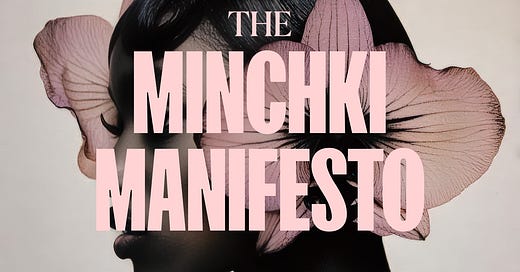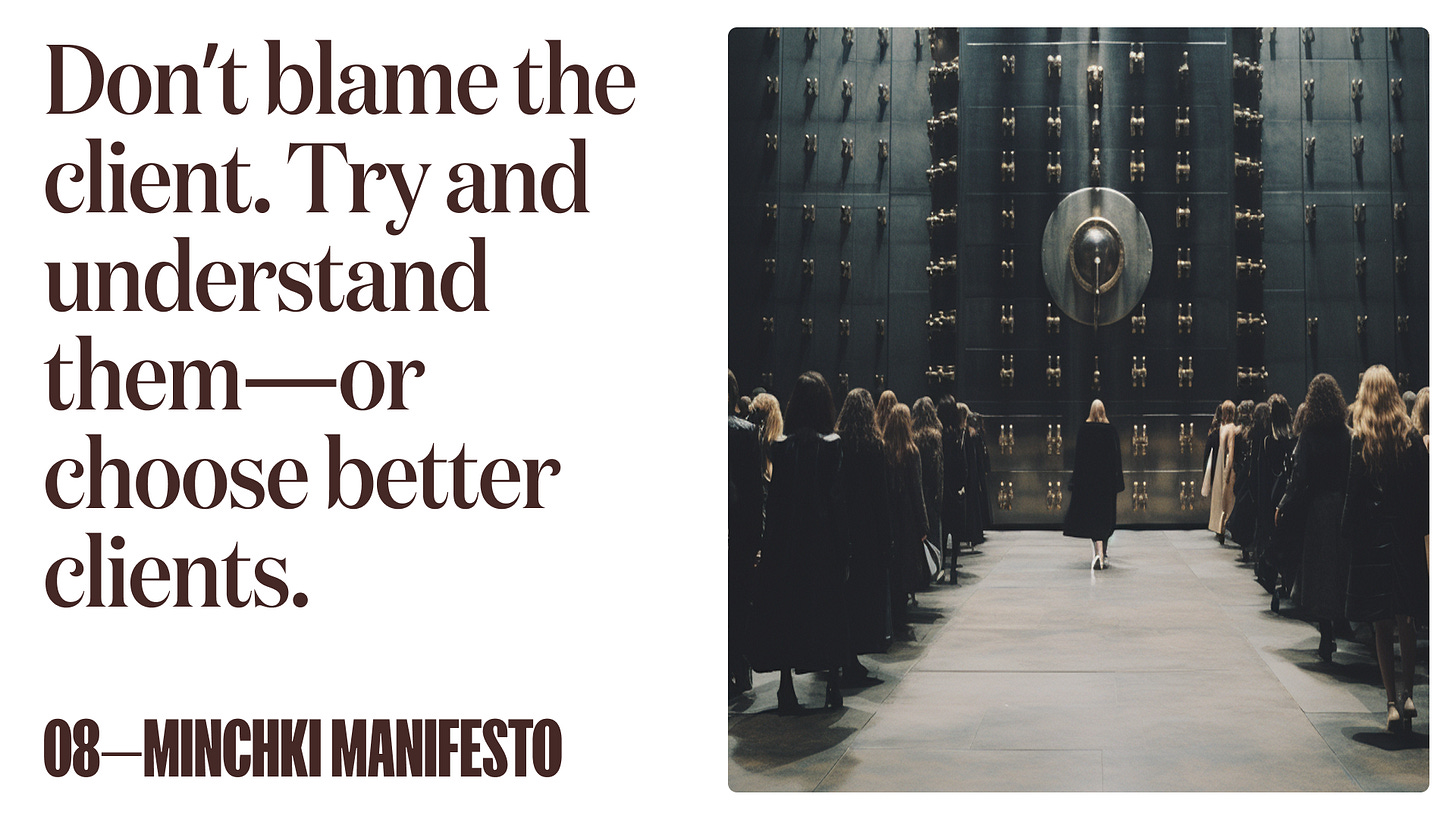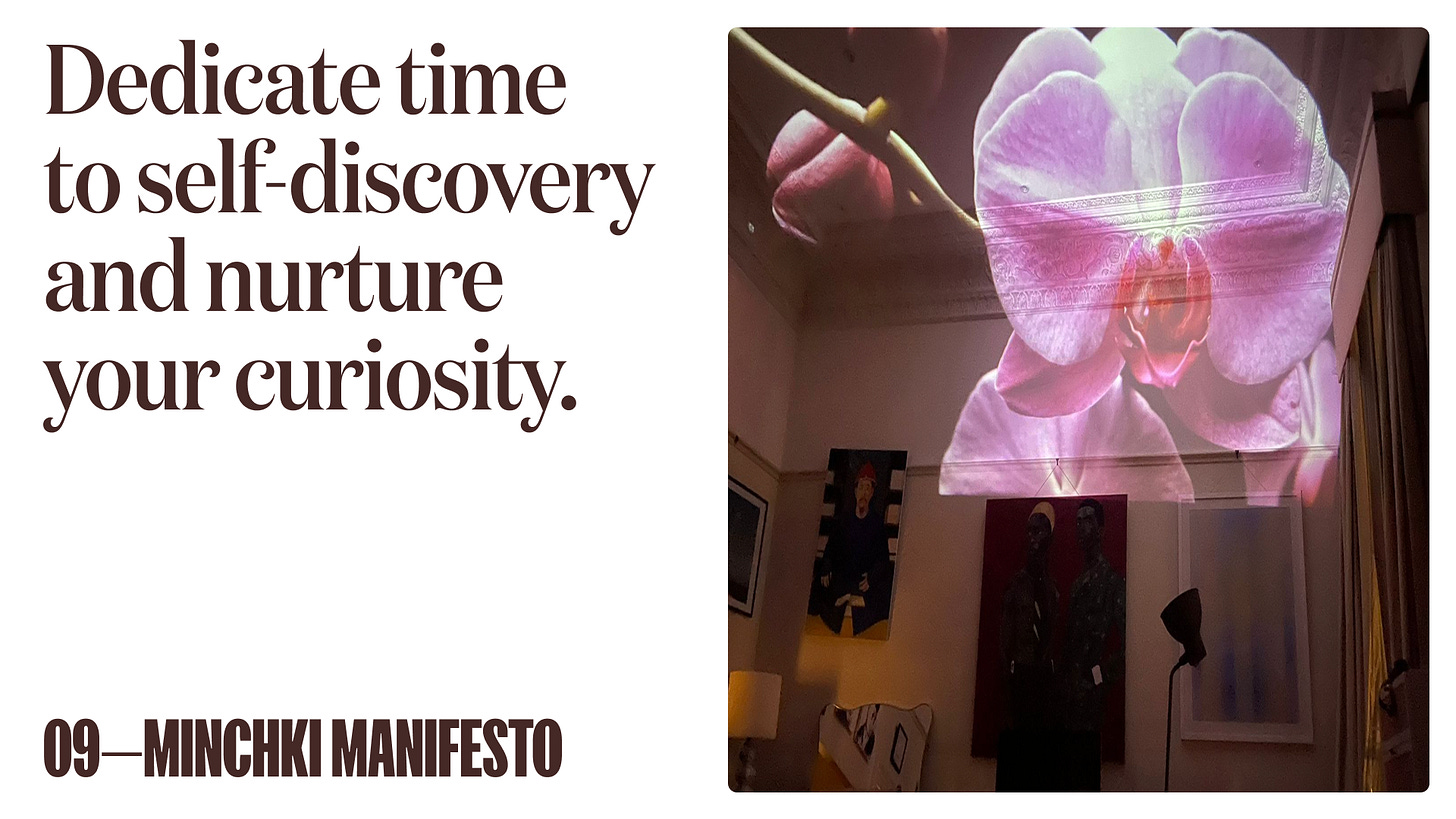Every creative I admire has one thing in common: they know themselves deeply. They know what excites them, what drains them, and what they’re here to build. That doesn’t happen by accident. You have to make time for self-discovery. You have to nurture curiosity like a garden—with intention, space, and ritual.
And then, there’s the scaffolding. The part nobody talks about in design school: invoices, timelines, schedules, calendars, spreadsheets, paying taxes. At Minchki, we believe systems and soul must co-exist.
1. Bring back joy and a sense of play into your process.
This is the throughline. The manifesto. The moodboard. The mission. Joy.
Bring it into your process. Into your studio. Into your collaborations. Into your inbox. When we follow joy, the work becomes less about performance and more about purpose.
"You can still take your work seriously without taking yourself so seriously."
We believe the future of creativity isn’t productivity. It’s pleasure.
2. Keep making things for yourself.
Before the deadlines, the decks, and the pitches, we were just making things for fun.
Personal work has become our studio’s oxygen. We carve out time to design guides, write essays, build digital tools, and experiment without any client input. Why? Because it reminds us why we fell in love with this in the first place.
Make zines. Make moodboards. Make PDFs no one asked for. It keeps the flame alive.
"Making for yourself is not a luxury. It’s maintenance."
3. When you are not feeling good, wash your hair or go for a walk.
Not every day is a breakthrough day. And that’s okay.
Some days you just need to walk away. Wash your hair. Go for a walk. Water your plants. Call your mum. At Nimisha Inc, we don’t power through creative blocks—we step away, gently.
Because often, the best ideas don’t come when you’re staring at the screen. They come in the shower. Or at the park. Or while you’re untangling your headphones.
"You’re not a machine. Rest is part of the process."
4. Say no to clients that you don’t want to really work with.
Every time you say yes to the wrong project, you’re saying no to the right one.
Learning to say no has been one of the hardest and most liberating things I’ve learned as a studio founder. Not because I don’t want to help—but because creative energy is finite. If you spend it in the wrong places, it dries up before it can go somewhere meaningful.
We say no to:
Clients who don’t value collaboration
Projects misaligned with our ethos
Opportunities that come wrapped in urgency, ego, or extraction
Saying no is about protecting your 'yes' for the work that fuels you.
"Yes is sacred. Guard it with everything."
5. Reach out to people you admire. Give your time to people who ask for help.
We believe in creative karma. Reach out to the people who inspire you. Offer help to those just starting out. Send a cold email. Host a dinner. Share a resource. Write the damn DM.
Some of our best collaborators came from a single message.
"The people you admire are just people. Reach out."
Generosity isn’t a marketing strategy. It’s a mindset.
6. Communicate boundaries clearly and early.
Clear is kind. And in creative relationships, clarity is everything.
We set boundaries early and gently: timelines, scope, feedback windows, tone of collaboration. Because boundaries aren’t about control—they’re about creating the space for real trust, creativity, and momentum.
The best client relationships we’ve had were the ones where expectations were shared openly, not assumed silently.
"Boundaries don’t box you in. They give the work room to breathe."
7. Branding is a team sport, collaborate with others—it will expand your work.
The myth of the solo genius is seductive. One name. One vision. One big idea. But in our experience at Nimisha Inc, the best brands aren’t built by a singular mastermind—they’re built through collaboration, conversation, and creative friction.
Branding is a team sport. It thrives when designers, strategists, founders, photographers, and copywriters come together—not in service of hierarchy, but in pursuit of something bigger than any one of them.
"The best ideas get better when shared."
8. Don’t blame the client. Try and understand them—or choose better clients.
We’ve all heard the horror stories: the indecisive founder, the disappearing stakeholder, the unclear brief.
But what if we shifted our perspective from blame to responsibility? At Nimisha Inc, we try to ask: did we vet this properly? Did we communicate well? Was this truly the right fit?
When the answer is no, it’s on us to choose differently next time.
"The client isn’t always wrong. Sometimes, they’re just not your client."
9. Dedicate time to self-discovery and nurture your curiosity.
Every creative I admire has one thing in common: they know themselves deeply. They know what excites them, what drains them, and what they’re here to build. That doesn’t happen by accident. You have to make time for self-discovery. You have to nurture curiosity like a garden—with intention, space, and ritual.
"Curiosity leads. The work follows."
Journal often. Chase obsessions. Build rituals. Make time to explore your own taste—before everyone else tells you what’s good.
10. Organize and understand your finances. Be on time.
There’s nothing chic about missing a deadline or ghosting on an invoice.
We treat project management as part of the creative act. Our Notion dashboards are as designed as our decks. Our finances are reviewed monthly. Our timelines are updated with care.
"Be curious, but get your sh*t together."
Play, get curious, explore and make. Go deep into things that make your brain light up. Make beautiful folders. Build beautiful dashboards. Know your finances. Send things on time.
Creative freedom comes from knowing what makes you tick and making space for that to flourish.
Enjoyed this piece?
If it sparked something in you, I’d love for you to stick around.
Subscribe to Tasty Magazine for more essays, tools, and tender truths on building a creative life with depth and direction.
→ Support my work or share it with someone who needs it
Thanks for reading. Stay tasty.
— Nimisha













